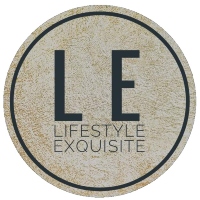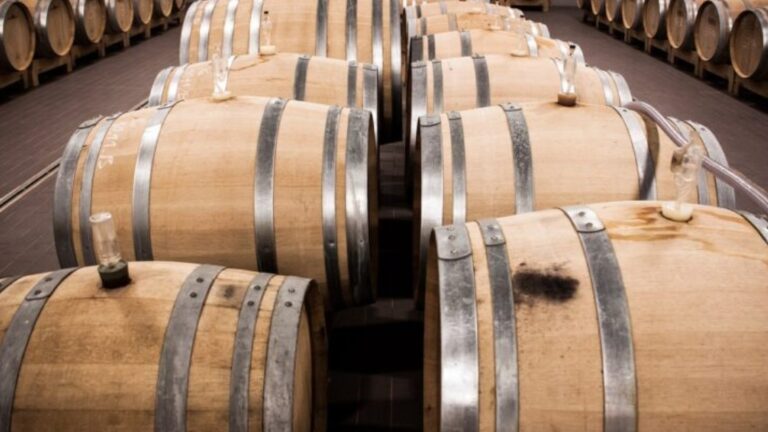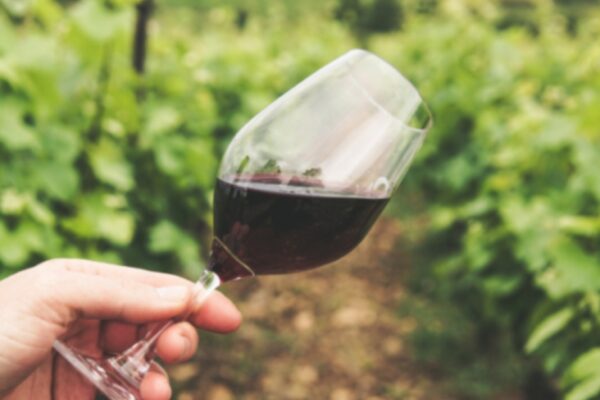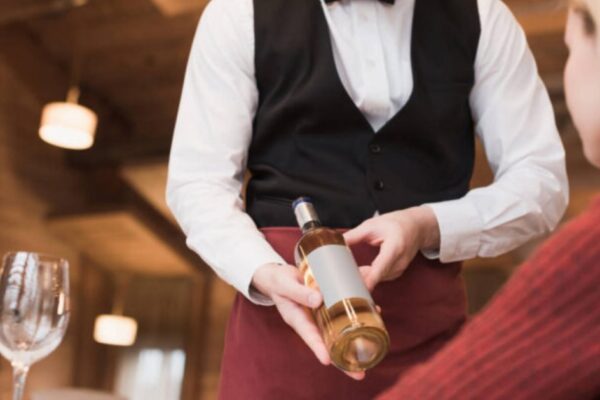Wine is a sensitive and complex combination of chemical components, and the way it is crafted depends on various processing operations and decisions. Temperature plays a significant role at various stages during the lifetime of wine and continues to be critical in maintaining wine in its optimal state up to transportation and storage.
How Wine Temperature Affects Wine Quality
Elevated and fluctuating temperature can accelerate a wine’s ageing process and can also alter its colour and its sensory attributes, in terms of aroma and mouthfeel. There are seven main critical control points at which temperature needs to be adequately controlled, namely:
- Crushing,
- Fermentation,
- Blending,
- Maturation,
- Bottling,
- Shipping, and
- Storage.
The chemistry changes that occur from elevated temperatures in red wines are generally more complex than they are in white wines. However, white wines are more heat-sensitive. High temperatures reduce sulphur dioxide levels which are important in preventing wine from reacting with oxygen. This results in browning (e.g. in white wines) and off-odours (oxidation). Sulphur dioxide is also important in inhibiting the growth of bacteria and undesirable wild yeasts.
Unfortunately, changes in wine become apparent only when the wine reaches you. Your part in storing wine well until you come to taste it is also critical. Wine should be stored in cool cellars or air-conditioned facilities at 15–20°C. A wine that is held at a low temperature (e.g. less than 10°C) is less suspectible to spoilage, but will also take much longer to develop1.
The ideal temperature in serving wine then comes as an important factor as to what aromas you’ll smell and what flavours you’ll taste. Here are some best practices on the ideal wine serving temperature based on the style of wine.
Ideal Wine Temperature For Serving Wine
Generally speaking, it is better not to serve white wines too cold or reds too hot. Remember that the cooler the wine, the less aroma will volatilize in your glass. This tip comes in handy when it comes to lower quality wines as a cooler temperature will conceal potential flaws in the aromas.
In determining whether the temperature is good, follow these quick tips:
- If you smell too much alcohol, then it might be that the wine is too warm and you need to cool it down.
- If the wine does not lift many aromas to your nose and barely has a flavour, then most probably the wine is colder than it should be and you need to warm it up a bit. Depending on whether it is too cool or not, you can start by warming the glass in the palm of your hands. Otherwise, leave it for a while at room temperature before beginning your wine tasting experience.
Quick Guide To The Ideal White Wine Temperature
In general, full-bodied white wines should be served slightly warmer than the fridge temperature, whilst light-bodied wines should be served “ice-cold”.
If you have just bought a wine and can’t wait to try it out, feel free to put in the freezer for a few minutes or in an ice bucket.
| Body of wine | Grape variety | Example | Best Served | Wine Serving Temperature |
| Medium-bodied | Pinot Grigio | Gris 2017, by Lis Neris | Fridge Cold | 47-45°F / 8-10°C |
| Light-bodied | Viognier | Viognier, Santa Julia | Fridge Cold | 49-55°F / 9-12°C |
| Light-bodied | Riesling | Encore Noble Riesling 2016, Pegasus Bay | Fridge Cold | 49-55°F / 9-12°C |
| Medium-bodied | Sauvignon Blanc | Sauvignon Blanc 2018, by Quinta de Sant’Ana | Fridge Cold | 50-55°F / 10-12°C |
| Medium-bodied | Chardonnay | Rully Montagne La Folie 2018, by Domaine Claudie Jobard | Fridge Cold | 55°F / 12°C |
Quick Guide To The Ideal Rosé Wine Temperature
Rosé Wines are best served “fridge cold” between 44–55°F / 7-12°C. For example, the all-time favourite Rosé, Whispering Angel Rosé 2019 by Château d’Esclans, is best served at 46°F / 8°C. This wine is from Côtes de Provence in France and is clear and fruity. It presents itself with red fruits and flowers at the nose and has an elegant mineral touch on the palate.
Quick Guide To The Ideal Red Wine Temperature
Generally speaking, you should serve red wines slightly cooler than room temperature, with the exception of light fruity wines which are ideally served slightly chilled.
| Body of Wine | Grape Variety | Example | Best Served | Wine Serving Temperature |
| Light- to Medium-bodied | Pinot Noir | Pinot Noir 2019, by Rockburn | Slightly Cool | 59-65°F / 15-18°C |
| Medium-bodied | Merlot | Varneri Collio Merlot 2008, by Marco Felluga | Slightly Coo | 61-65°F / 16-18°C |
| Full-bodied | Syrah | Supreme Syrah 2012, by Vinarija Benkovac – Korlat Vina | Slightly Cool | 61-65°F / 16-18°C |
| Full-bodied | Cabernet Sauvignon | Tenuta San Michele Cabernet Sauvignon 2010, by Murgo | Slightly Cool | 64-68°F / 18-20°C |
Quick Guide To The Ideal Specialty Wine Temperature
Sparkling wines are best enjoyed “ice-cold”, but when it comes to higher-quality sparkling wines, like Vintage Champagne, it’s always better to allow it to slightly warm a bit for the aromas to lift better.
| Body of Wine | Grape Variety | Example | Best Served | Wine Serving Temperature |
| Full-bodied Sparkling Wine from Franciacorta, Italy | Chardonnay (75%), Pinot Nero (15%), Pinot Bianco (10%) | Franciacorta Cuvée Prestige N.V., by Ca’ del Bosco | Ice-Cold | 43-47°F / 6-8°C |
| Full-bodied Sparkling Wine from Champagne, France | 50-55% Pinot Noir, 30-35% Pinot Meunier, 15-20% Chardonnay | Cuvée Brut Champagne N.V., by Piper-Heidsieck | Fridge-Cold | 47-50°F / 8-10°C |
| Fortified Wine | Old Vines (Tinta Cão, Touriga Francesa, Touriga Nacional, Tinta Roriz, Tinta Barroca) | 10 Year Old Tawny Port N.V., by W. & j. Graham’s | Slightly Cool | 54-59°F / 12-15°C |
You may always serve wine according to your personal preferences. However, starting with what is generally considered to be the ideal serving temperature by type of wine, allows you to reap better the aromas and flavours of the wine. After that, go ahead and experiment to come up with the temperature which works best for you. If you want to maximise your wine tasting experience make sure that you are familiar with the wine tasting principles here.
Wine Coolers
Nowadays you are spoilt for choice when it comes to wine coolers. You can find wine coolers in various sizes, built-in or free-standing, and in a variety of designs that aligns with your interior home décor.
In ensuring your wine is kept at the optimum temperature and is protected against humidity, for Maltese residents I recommend you give Crosscraft a visit. Crosscraft offers a wide range of built-in wine coolers by Caple. If you have forgotten to incorporate a wine cooler when designing your home or have developed a passion for wine afterward, you can rest assured that at Crosscraft you can also find free-standing wine coolers. For international clients you may find wine coolers here.
Sources
1 Scrimgeour, Neil & Nordestgaard, S & Lloyd, N & Wilkes, Eric. (2015). Exploring the effect of elevated storage temperature on wine composition. 713. 10.1111/ajgw.12196.





Everything is very open with a precise description of the challenges.
It was truly informative. Your site is very helpful. Thanks for sharing!
Thank you for the auspicious writeup. It in fact was a amusement account it.
Look advanced to more added agreeable from you!
By the way, how can we communicate?
My web blog jasa pembuatan software kasir [Jurgen]
Hello my friend! I wish to say that this post is amazing, great written and include approximately all important infos.
I would like to peer extra posts like this .
Also visit my website jasa desain company profile – Shenna –